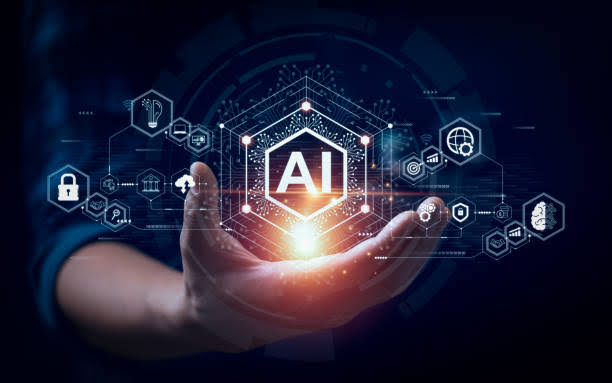“by Krishna Bayanna “
Education technology (Ed Tech) and artificial intelligence (AI) have both made significant strides in revolutionizing the education system. However, it is the convergence of these two fields that holds the potential to transform classrooms worldwide. AI-based virtual learning is at the forefront of this revolution, introducing a new type of personalized and interactive education.
The Potential AI Avatar-based Virtual Learning to Revolutionize Classrooms
Imagine a classroom where everyone has a personalized learning experience tailored to their individual needs and abilities. This is what AI avatar-based virtual learning offers. By leveraging AI algorithms and natural language processing these avatars can interact with students in real-time, providing personalized feedback, guidance, and support. This technology has the power to reshape education as we know it, making it more engaging, effective, and accessible for all learners.
Defining the Role of AI Avatars in Enhancing Personalized Learning Experiences
AI avatars play a crucial role in enhancing personalized learning. They act as virtual tutors, guiding students through their educational journey and adapting the curriculum to their unique learning styles. By utilizing data analytics and machine learning, these avatars can identify areas where students excel or struggle and offer tailored support accordingly. This level of personalization not only maximizes learning outcomes but also fosters a sense of confidence and resilience in students.
Enhancing Teaching and Learning Practices with AI Avatar-based Virtual Learning
Customizing Education for Individual Needs
AI Avatars enable a new era of customized education, where learning paths can be tailored to meet the individual needs of each. No longer bound by a one-size-fits-all approach, educators can leverage AI technology to create personalized learning experiences that cater to students’ strengths, weaknesses, and interests. This level of customization ensures that students are engaged and, as they see the relevance and applicability of their education to their own lives.
Facilitating Collaborative and Interactive Learning
AI avatar-based virtual learning transcends geographical barriers by connecting students from different parts of the world. Through virtual classrooms and collaborative learning environments, students can engage in meaningful discussions, share ideas, and work together on projects regardless of their physical location. This not only promotes diversity and inclusivity but also fosters the development of critical thinking and problem-solving skills in students.
Enhancing Teacher Support and Professional Development
AI avatars also play a significant role in supporting educators in their teaching practices and professional development. As virtual assistants, these avatars can help streamline administrative tasks for teachers, such as grading assignments, organizing schedules, and managing student data. Furthermore, AI avatar-based platforms can offer personalized training and professional development opportunities for teachers, allowing them to stay updated with the latest pedagogical approaches and adapt to the evolving requirements of education.
Advancing Accessibility and Inclusivity in Education
Breaking Down Physical Barriers to Education
AI avatar-based virtual learning has the power to overcome physical limitations that may hinder access to education. Students with physical disabilities can now participate in classrooms and learning environments without facing the challenges of accessibility. By providing a virtual space where students can engage, collaborate, and learn, this technology ensures that every learner, regardless of their physical abilities, has equal opportunities to gain knowledge and thrive academically.
Empowering Learners with Special Needs:
For students with learning differences or special needs, AI avatars act as personalized learning companions, amplifying their strengths and supporting their learning styles. These avatars can adapt the content and teaching methods to suit the specific needs of each student, providing a more inclusive and supportive learning environment. By embracing neurodiversity and utilizing adaptive technologies, AI avatar-based virtual learning empowers learners with special needs to reach their full potential.
Enriching Language Learning and Cultural Exchange
Language barriers and cultural differences can be significant obstacles to effective education. However, AI avatars serve as language tutors and translators, breaking down these barriers and enabling meaningful communication and learning experiences. Additionally, virtual cultural exchange programs facilitated by AI avatars cultivate global citizenship, encouraging intercultural understanding and empathy among students. Through these interactions, learners can broaden their horizons and develop a global perspective.
Ethics, Privacy, and the Future of AI Avatar-based Virtual Learning
Addressing Ethical Concerns
As AI avatar-based virtual learning becomes more prevalent, it is essential to address ethical concerns surrounding its implementation. Ensuring transparency and accountability in AI algorithms and platforms is crucial to maintain trust and avoid biases. Moreover, safeguarding student data is paramount, striking a balance between personalized learning and privacy protection. Promoting responsible AI use in education and nurturing digital citizenship is vital to creating a safe and ethical learning environment.
Supporting Human-AI Collaboration
While AI avatars offer valuable support and resources, it is important to emphasize the role of human educators in virtual learning environments. The symbiotic relationship between human teachers and AI avatars is crucial for optimal learning outcomes. Human educators provide the empathy, creativity, and critical thinking that AI avatars may lack. By designing AI avatars to augment, rather than replace, human educators, we can ensure a harmonious collaboration that leverages the strengths of both humans and AI.
Exploring Future Possibilities and Challenges
The future of AI avatar-based virtual learning holds immense potential. As the technology continues to evolve, we can anticipate its growth in the education landscape. However, broader implementation and adoption may face challenges. It is essential to address issues such as accessibility, affordability, and equity to ensure that AI avatar-based virtual learning benefits all students, regardless of their background. By paving the way toward an education system that harnesses the full potential of AI avatars, we can truly reshape education for the better.
Global AI Market Insights:
In parallel with the transformative impact of AI in education, the global AI market is experiencing unprecedented growth. According to Grand View Research, the global AI market is projected to grow at a CAGR of 38.1%, reaching $1,811.8 billion by 2030, up from $136.6 billion in 2022.
AI Market Growth:
The global AI market size is expected to reach $2,575.16 billion by 2032, with North America holding over 36.84% of the market share and the Asia Pacific growing at a CAGR of 20.3%.
Conclusion:
AI avatar-based virtual learning has the transformative power to revolutionize education. Personalized learning experiences, collaborative and interactive environments, enhanced accessibility, and inclusivity, along with ethical considerations, all contribute to the impact and potential of this technology. As we embrace the possibilities and challenges of AI avatar-based virtual learning, we open doors to a new era of education that maximizes student potential and prepares them for the future. Simultaneously, the global AI market’s rapid growth and diverse applications further underscore the significance of artificial intelligence in shaping the future across various industries.
input from “Medium”


























 WhatsApp us
WhatsApp us